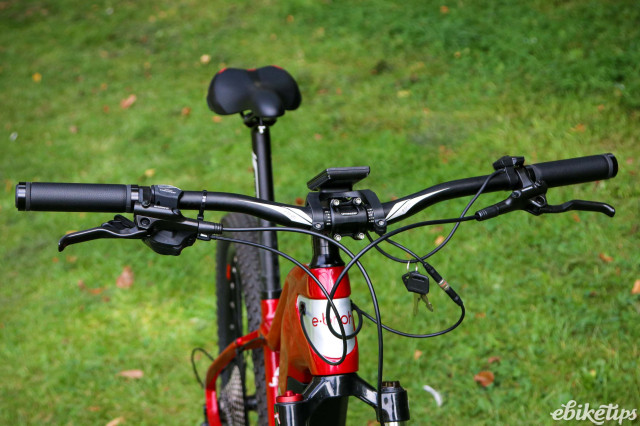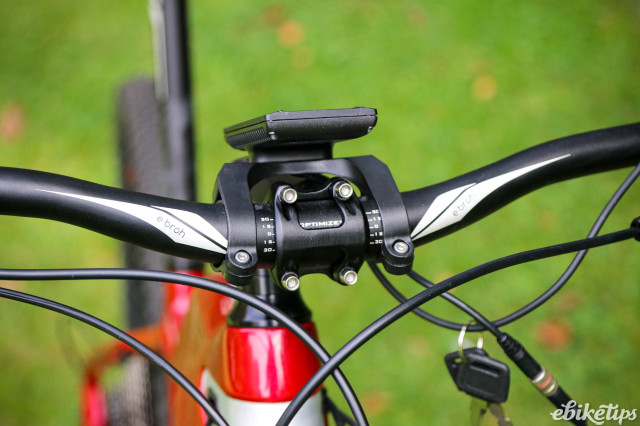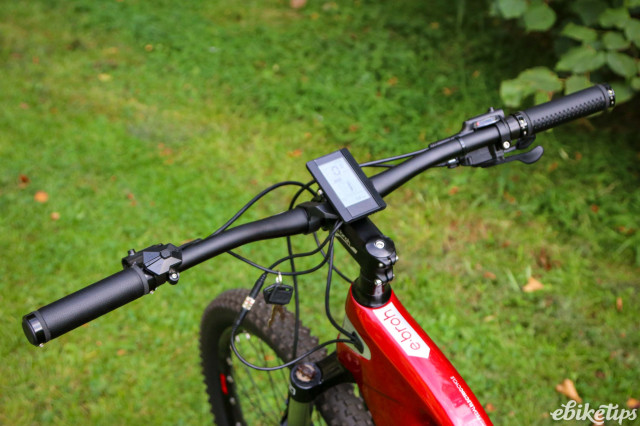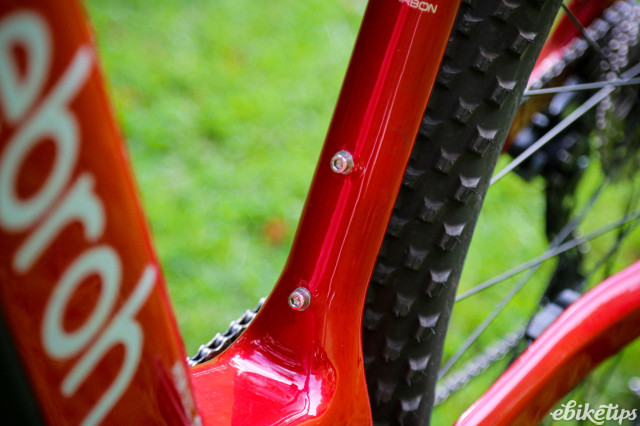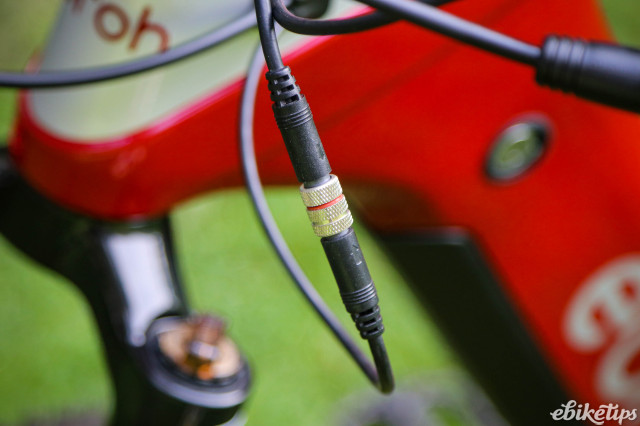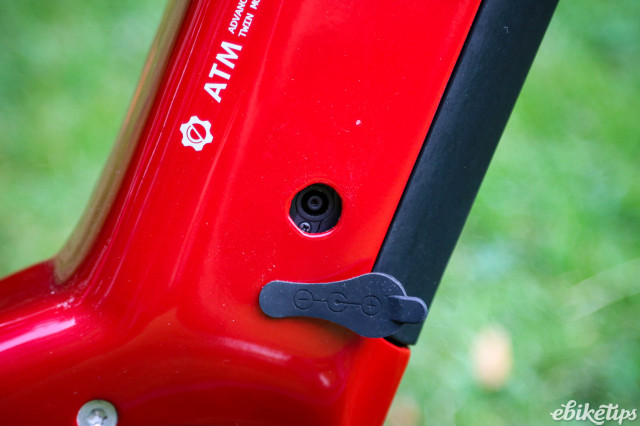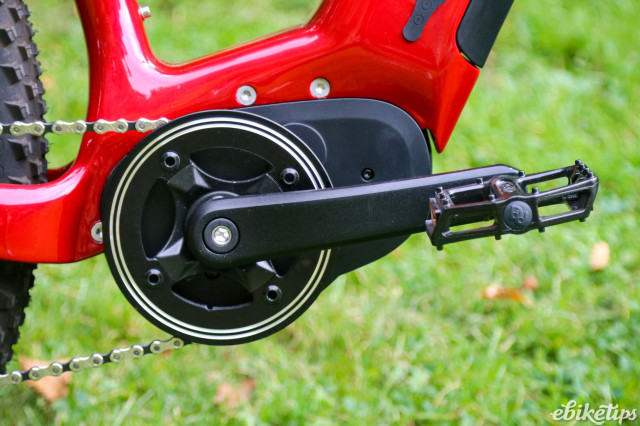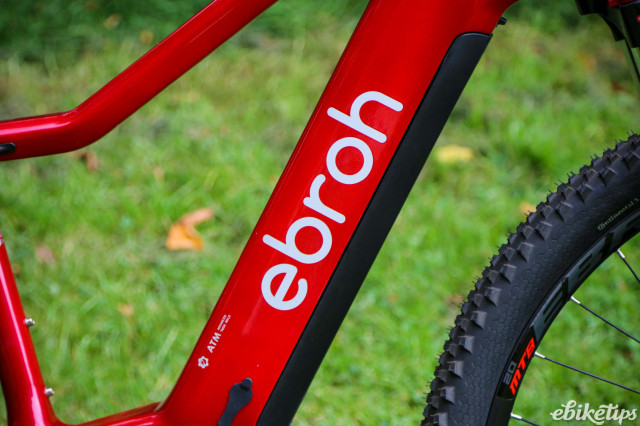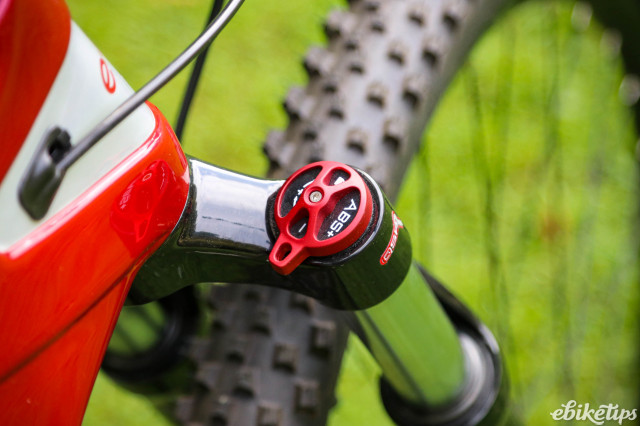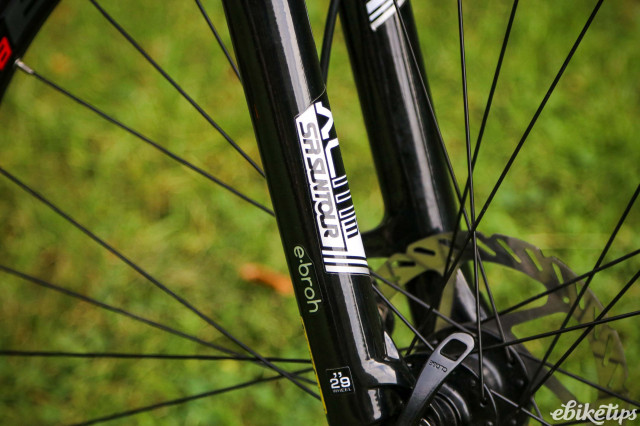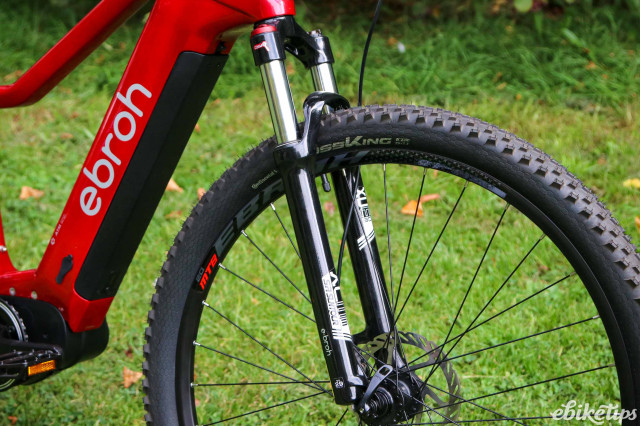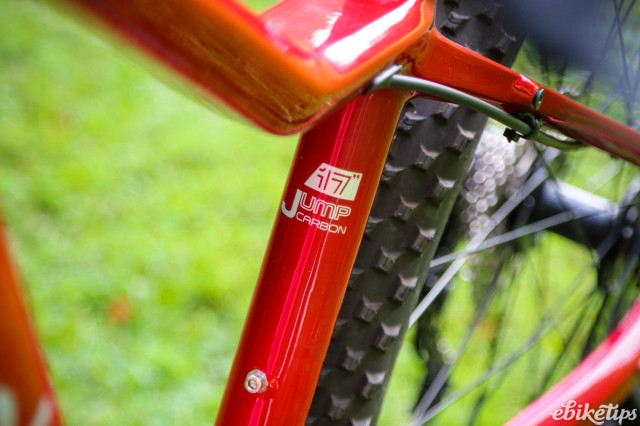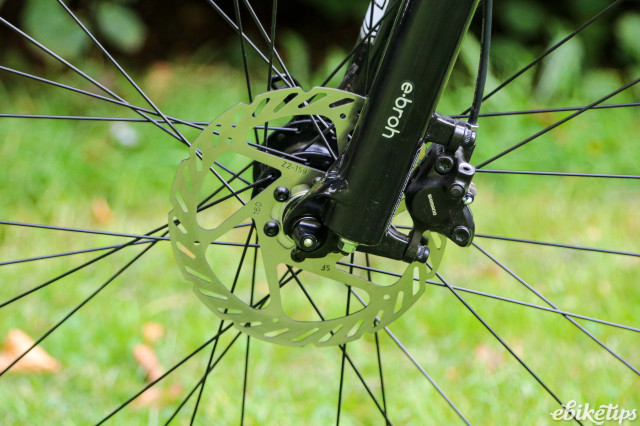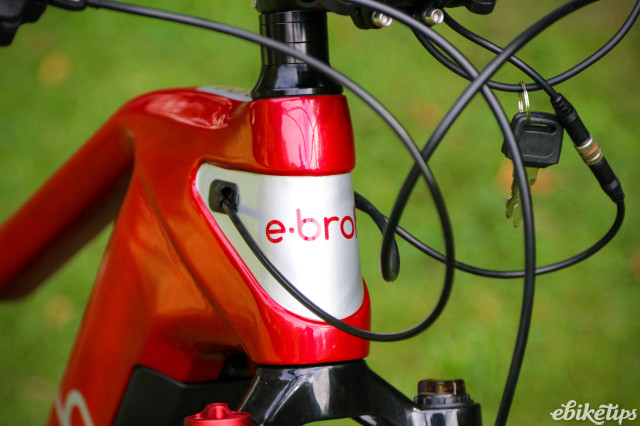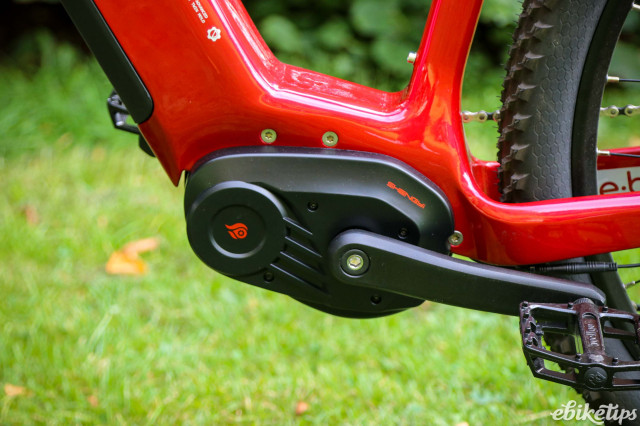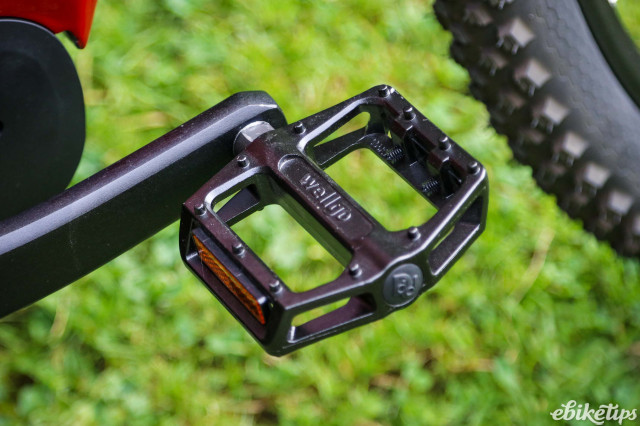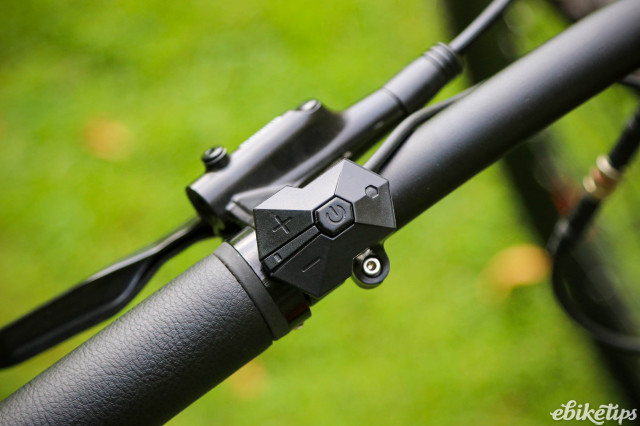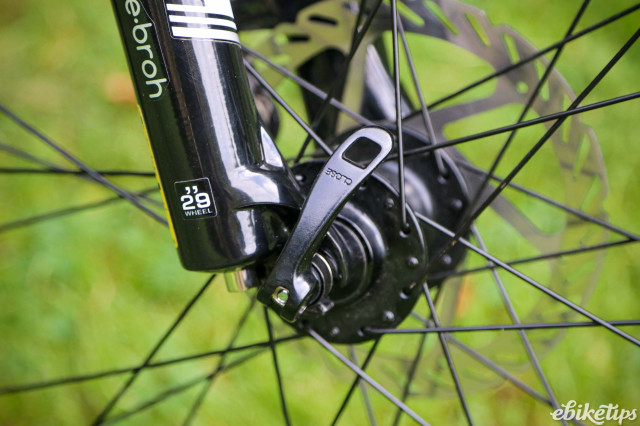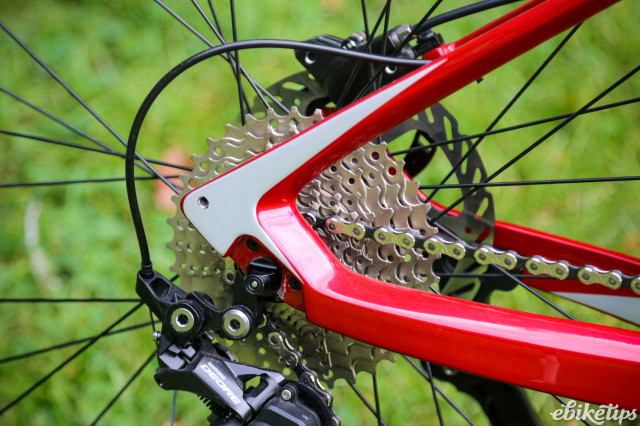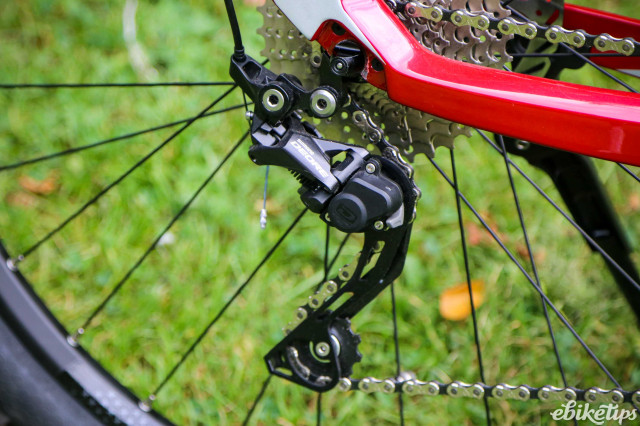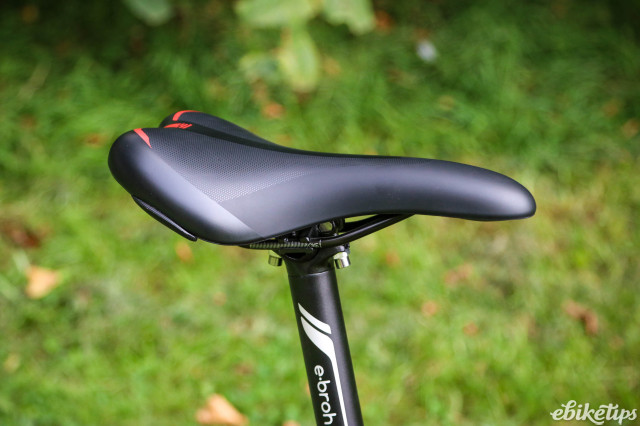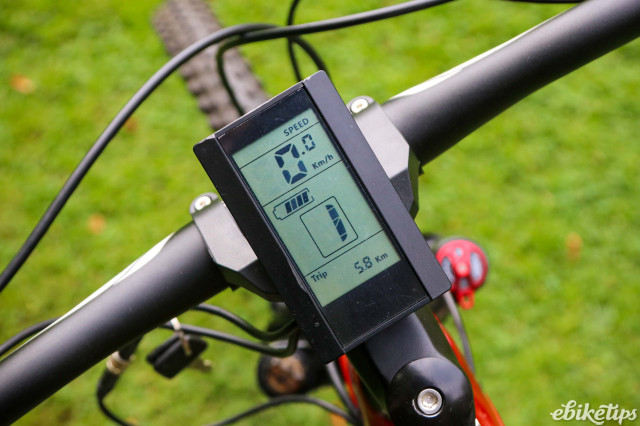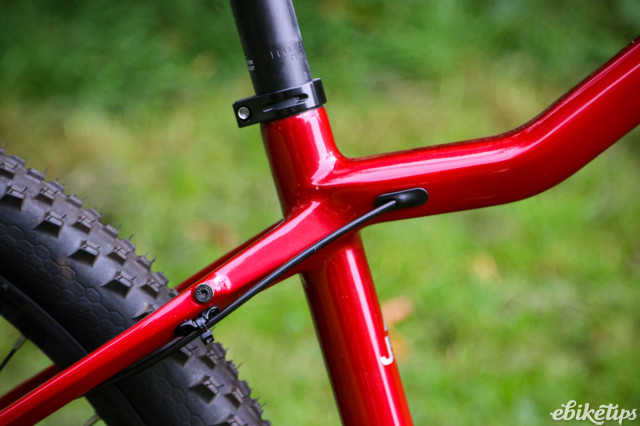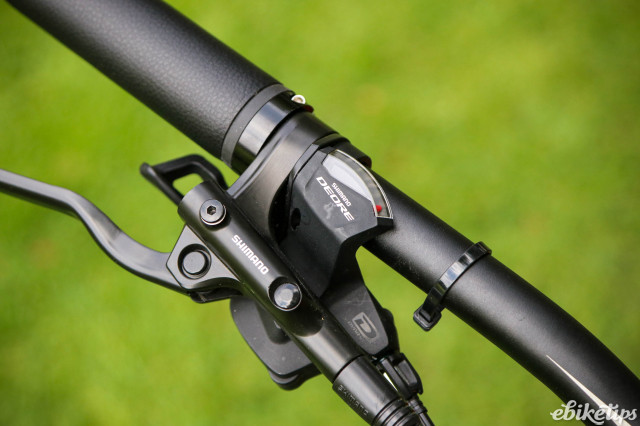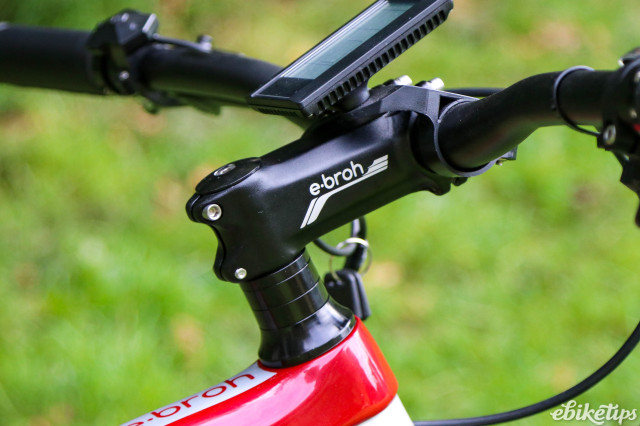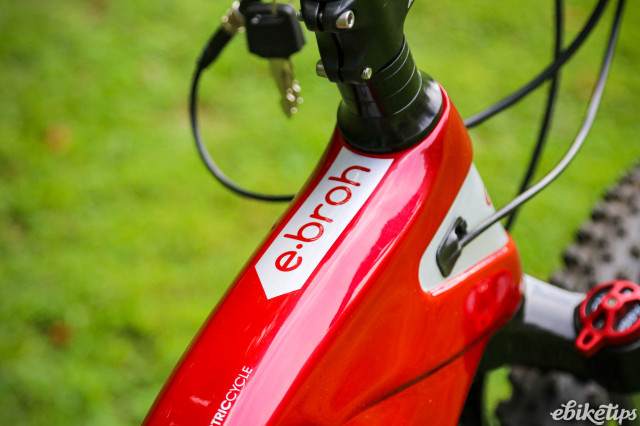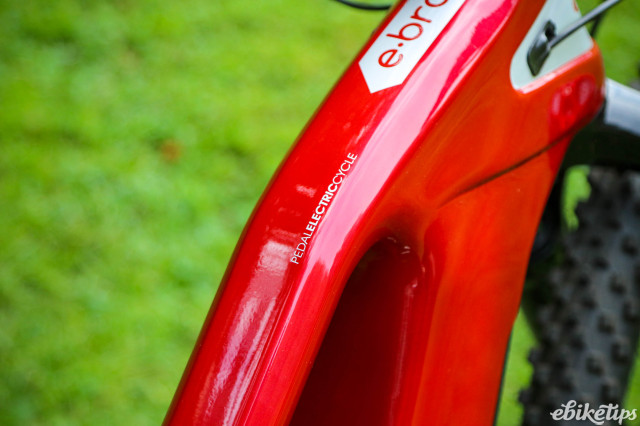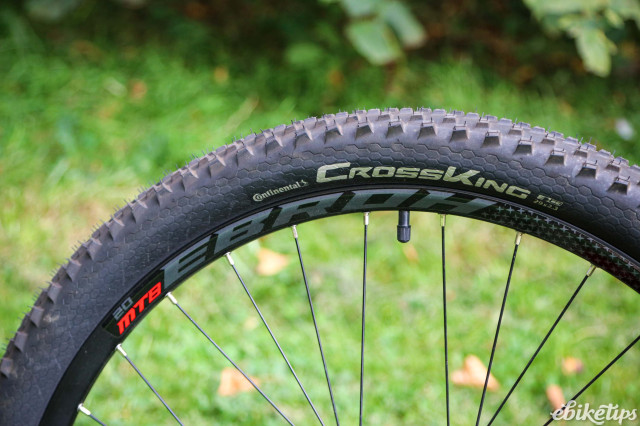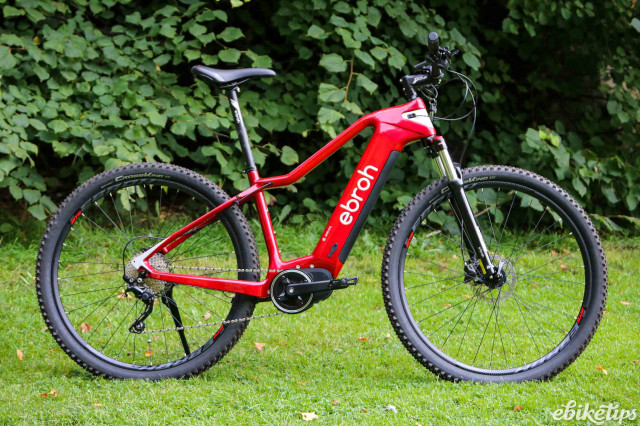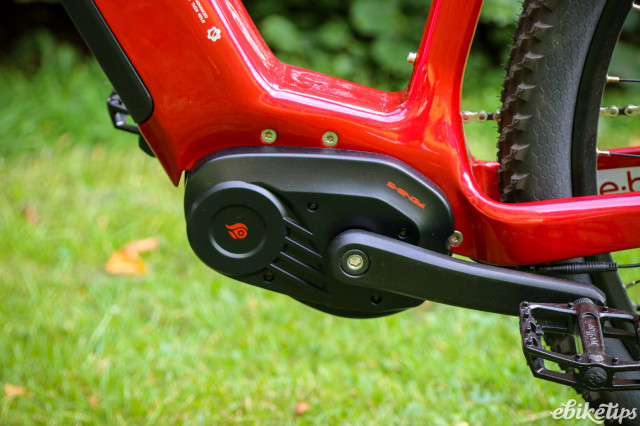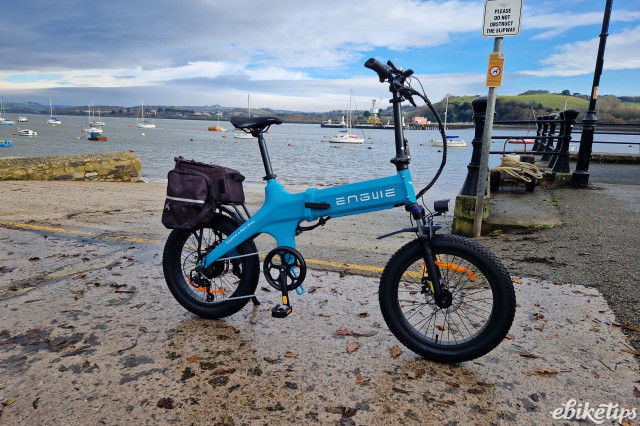Red is objectively the best colour for a bike, so it was with barely suppressed joy that we saw the Ebroh Jump Carbon model delivered in a sparkly crimson. There's blue, black and grey too, if you don’t share our love of scarlet.
Whichever colour you choose, the Jump Carbon is an electric mountain bike, and comes from Italian manufacturer Golden Ride, which opened a store in That London earlier this year.
It's priced at £2,270, which is pretty competitive for a mid-motor e-MTB.
It’s a bit of a monster, with a Toray T700 carbon fibre frame, a 250W Shengyi mid-mounted motor, 29x2.3 fat Continental tyres, the usual Shimano bits and a big 720Wh frame-integrated battery that should help put range anxiety to bed.
That downtube is thick, and the beautifully engineered and aesthetically pleasing kink in the top tube makes it slightly less than perfectly compatible with the common double-pronged style of cycle carrier.
Sadly, we were unable to find an actual mountain to ride the Jump Carbon up, but we did manage to find a few hills and some tracks and greenways with a dry loose surface.
It is, to put it bluntly, a superb ride, and for a shade over two grand it’s really playing with some big boys.
Firstly, those tubes. It has become a distinguishing feature for electric mountain bikes to feature integrated batteries, and with its mid-motor and front suspension the Jump Carbon is following a broadly similar plan to that of the Volt Alpine or Cube Reaction Hybrid Performance, though it has chosen to have the kink in its top tube go in the other direction to those bikes. It’s a deep kink too, a combination of words which might bring the wrong type of search engine traffic to this article - but is in no way unpleasant to the eye.
The handlebars feel widely spread if you’re used to a road bike, though at 22.7kg it’s heavier than something like the Riverside 540e and not much lighter than the aforementioned Cube, the carbon fibre frame shaving off around a kilo.
The broad bars and fat tyres mean it’s slower to turn if you’re riding it on the road, but the extra stability and grip they give when you’re on something bumpy will likely outweigh the lack of nimble cornering to its target audience. If your commute involves permissive paths or farm tracks then the Jump Carbon could be a left-field choice, but it’s not a bike for pure road use.
Part of the reasoning behind this statement comes from the gearing. On the road it often feels like there needs to be an extra cog, the motor boosting you to the 16mph limit then leaving you there to do all the work yourself, your legs moving uncomfortably fast.
The front ring is quite small, which adds to this. Of course, once you get off the smooth stuff, it all makes a lot more sense, and there's plenty of power for hill climbs and rough terrain, with a lot of low gears for you to explore while you’re going up.
Notably, the Shimano Deore 10-speed gearing implementation on the Jump Carbon is one of the noisiest we’ve encountered, the chain slamming home on a cog with what you might call a positive amount of feedback.
This is not necessarily a bad thing, as a chainset that slips smoothly and silently between gears can make you wonder if it’s all okay, but it does sound a bit mechanical for such a refined carbon-fibre machine. Add this to the noise from the motor, and if the potential to inconvenience sleeping badgers is there, at least you’ll be able to outrun them.
The gear shifter is on the right, with a screen in the middle displaying the usual data points: speed in km/h (we couldn’t work out how to switch it to miles), distance ridden, battery level. On the left is a simple switcher for turning the system on and moving up and down the five assistance levels.
We found that level 4 was plenty high enough, and 5 might be reserved for actually climbing mountains, as there's plenty of torque available. The Shimano disc brakes are MT-200 hydraulics, popular and reliable entry-level brakes that have quite a long lever, so some riders may be looking for an upgrade here to increase the sharpness and reaction speed.
The tyres don’t reach the heroic levels of fatness shown by bikes like the RadRhino, but are a decent step up in terms of both width and bobbliness from a hybrid or road bike. If you approach this bike from a background in commuting, it looks extreme, but there's a lot here that’s standard for an e-MTB in this price range. The standout is the 720Wh battery, which will offer longer endurance between charges than bikes with 500Wh (such as the Cube Reaction and the Volt).
Based on our limited time with the bike and a lack of local mountains, the Jump Carbon seems like a really nice ride. With its fashionable e-MTB look it stands out from the staid ranks of commuter bikes, and offers a combination of power and endurance that’s going to be attractive to those in search of a longer off-road ride.
